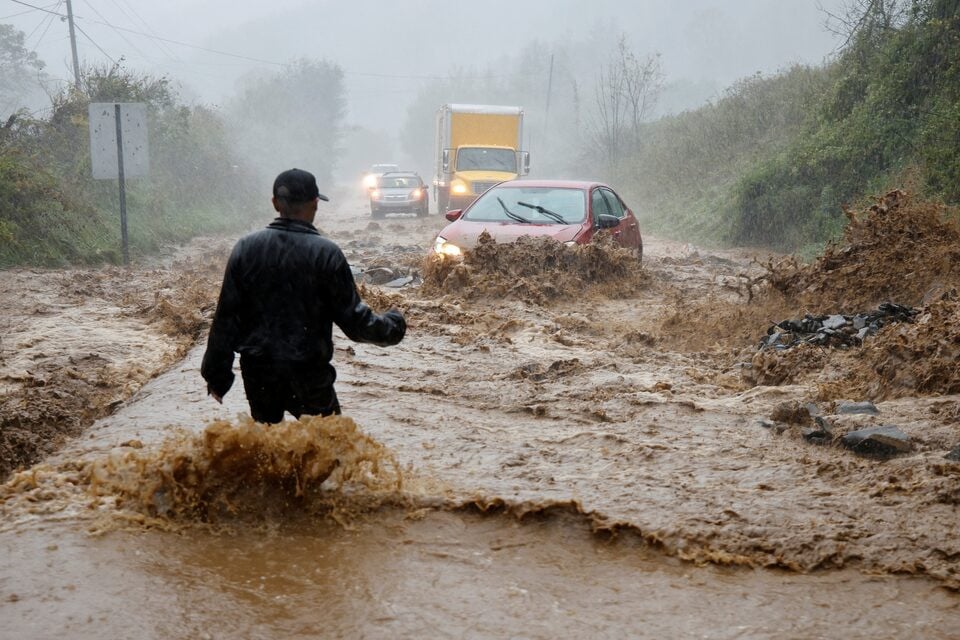North Carolina residents are bracing for a dangerous weather system as a severe thunderstorm watch has been issued for the state. The potential for strong winds and tornadoes has led authorities to warn citizens about the impending storm, which could bring severe weather conditions throughout the region. As the storm develops, here’s what you need to know and how to stay safe.
What’s Happening in North Carolina?
The National Weather Service (NWS) has issued a severe thunderstorm watch for much of North Carolina, signaling the potential for hazardous weather in the coming hours. The watch, which is in effect until late afternoon, indicates that conditions are favorable for the formation of severe thunderstorms capable of producing heavy rain, hail, and destructive winds. There is also a heightened risk of tornadoes across parts of the state.
Residents are urged to remain vigilant as these storms can develop rapidly, and weather conditions can change unexpectedly.
Key Risks from the Severe Thunderstorm
- Strong Winds
The primary threat associated with this storm system is the potential for damaging winds, which could reach speeds of 60 mph or higher. These winds have the potential to uproot trees, damage roofs, and cause widespread power outages. - Tornado Risk
Tornadoes are a significant concern, with the likelihood of tornado formation increasing during severe thunderstorms. The tornado watch currently in place indicates the possibility of rotating thunderstorms, which could spawn tornadoes without much warning. - Heavy Rain and Hail
Torrential rain and large hail are expected in some areas, which could lead to localized flooding, especially in low-lying regions or areas with poor drainage systems.
How to Stay Safe During Severe Weather
- Stay Informed
Keep up-to-date with weather alerts by listening to local radio stations, weather apps, or NOAA Weather Radio for real-time updates. If you’re in an area under a tornado warning, take immediate action to seek shelter. - Seek Shelter
If a tornado warning is issued, move to the lowest level of your home, preferably in a basement or interior room with no windows. If you are in a mobile home or temporary structure, relocate to a sturdier building or a designated storm shelter. - Secure Outdoor Objects
High winds can turn unsecured objects into dangerous projectiles. If possible, secure outdoor furniture, trash cans, and other loose items before the storm hits. - Avoid Travel
If possible, stay off the roads during severe weather. Strong winds and heavy rain can reduce visibility and make driving hazardous. If you must travel, keep an emergency kit, including water, snacks, a flashlight, and a first-aid kit.
What to Expect in the Coming Hours
The storm system is expected to intensify as it moves eastward across the state. Areas in central and eastern North Carolina could face the brunt of the storm, with tornado warnings issued for some counties. As the system progresses, residents should be prepared for rapidly changing conditions.
What Should Residents Do?
- Monitor Alerts: Sign up for local weather alerts or download an app to receive notifications about warnings in your area.
- Prepare an Emergency Kit: Make sure you have essential supplies like food, water, flashlights, batteries, and important documents in case of a power outage or evacuation.
- Plan Evacuation Routes: Know the safest areas in your home for shelter and plan how to exit quickly if necessary.
Conclusion
As North Carolina faces the threat of severe thunderstorms, including the risk of tornadoes and damaging winds, it’s crucial for residents to stay alert and prepared. By following weather advisories, securing your home, and having a safety plan in place, you can reduce the risks posed by these powerful storms.
Stay safe, and make sure to monitor local weather updates as the storm develops.



Comments (0)
No comments yet. Be the first to comment!
Leave a Comment